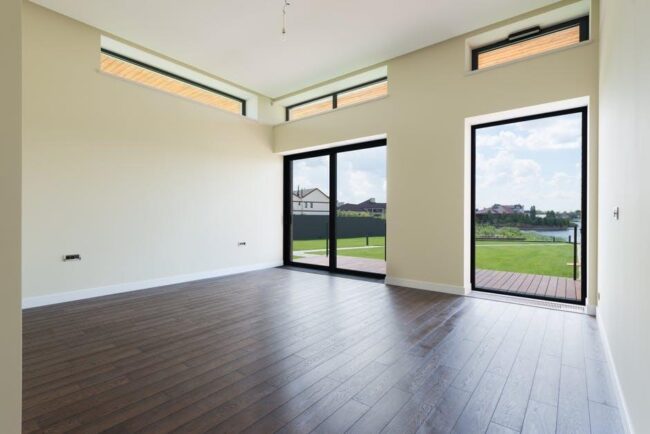
When it comes to enhancing the flow and functionality of your home, seamless transitions are key. When done right, smooth transitions can make even the smallest spaces feel larger and more cohesive. They can also help create a sense of harmony as you move from space to space, whether you’re moving from your living room to your kitchen or from your bedroom to your bathroom.
In this blog, you’ll discover 5 simple ways to create visual continuity between rooms with your home’s flooring, furniture, lighting, and décor.
Maintain consistent flooring throughout your home
Your flooring choice can be one of the easiest ways to seamlessly transition between rooms. By opting for consistent flooring throughout your home, you can create a better sense of flow and ensure different spaces feel interconnected. This also helps to remove visual disruptions, which can occur when different flooring types are used between rooms.
Luxury vinyl flooring is always a great option, as it’s stylish, durable, and is highly resistant to wear and tear. By choosing this type of flooring you can effortlessly create flow from room to room, whether you’re in an open plan layout or a closed concept home.
The use of rugs can also be a great way to subtly define zones, particularly when you choose one that complements your flooring. Use rugs to create distinct areas without interrupting the overall continuity of your home’s design.
Use colour to create a visual flow
Colour can also be used to create visual flow within your home. Opting for a cohesive colour palette allows you to connect different rooms and create a harmonious feel throughout your home.
A good starting point is to choose two or three core colours as a foundation for your space. These will act as a basis for your entire design, allowing you to add interest with complementary hues and contrast colours through your furniture, walls, and décor—such as cushions, artwork, or curtains. The key is to strike the right balance between cohesion and a dynamic look without making your contrasts feel too abrupt. Use your colour scheme to subtly link your rooms, and each piece will feel like part of the whole.
Top Tip: Create a mood board and play around with paint swatches to get a better feel before you commit.
Incorporate open or sliding doors
Open doorways or sliding doors can also be a great way to create seamless flow or subtle transition between spaces. Pocket doors or bi-fold doors are versatile and flexible choices, allowing you to either open up a room for connection or close it off for privacy. These doors can adapt to your needs, making them ideal for both open-plan living and creating distinct yet accessible spaces.
If you want to keep things open while setting clear physical boundaries between spaces, consider using glass panels or sliding doors. They let light shine through beautifully, providing visual separation without sacrificing brightness and an open feel. Want the option of making things more private? Honeycomb or Roman blinds make a stylish addition.
Use furniture to guide movement between rooms
You can also use your furniture to subtly guide movement and create natural transitions between rooms. By strategically positioning different pieces of furniture, you can direct foot traffic and movement within your space without resorting to physical barriers.
Consoles or benches can be used near doors and entryways to define transitions between areas. Likewise, low-profile furniture—think sleek sofas or minimalist chairs—works well for moving between spaces without obstructing sightlines or disrupting your home’s open, airy feel. It’s important to avoid overwhelming your room with too many different pieces. Instead, focus on creating a smooth flow that feels purposeful and cohesive.
Create flow with lighting
Strategic lighting design can also be a great way to create flow whilst maintaining cohesion throughout your home. Using similar light fixtures across rooms can help create a unified aesthetic. On the other hand, a more layered lighting approach allows you to highlight key areas without disrupting the overall flow of your space.
Think about how you can incorporate different types of lighting, such as ambient, task, and accent lighting, to achieve the perfect blend of style and function. Dimmable lights can be an excellent option, as they offer plenty of flexibility in spaces where lighting needs may change throughout the day—for example, in living-dining combo spaces. The right lighting will allow you to focus on specific areas while maintaining a harmonious feel that seamlessly connects different spaces.
Is a seamless household for you?
Consistency and thoughtful design are essential when designing a home that transitions seamlessly between rooms. To create a stylish, practical living space that feels connected and cohesive, focus on how elements like flooring, colour palette, doors, furniture and lighting can work together. By carefully considering these details, you’ll create a more harmonious and effortless sense of flow within your spaces.
